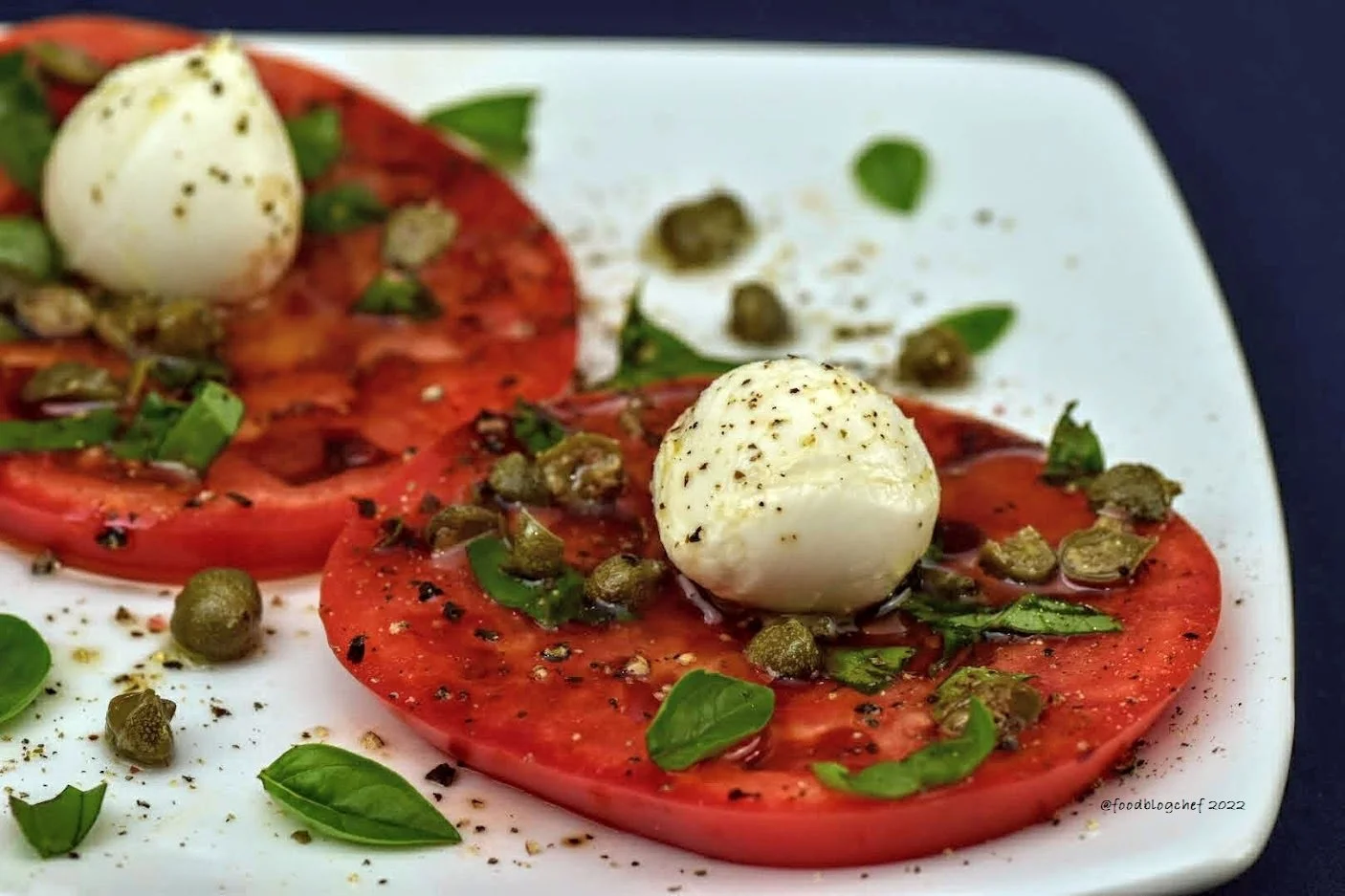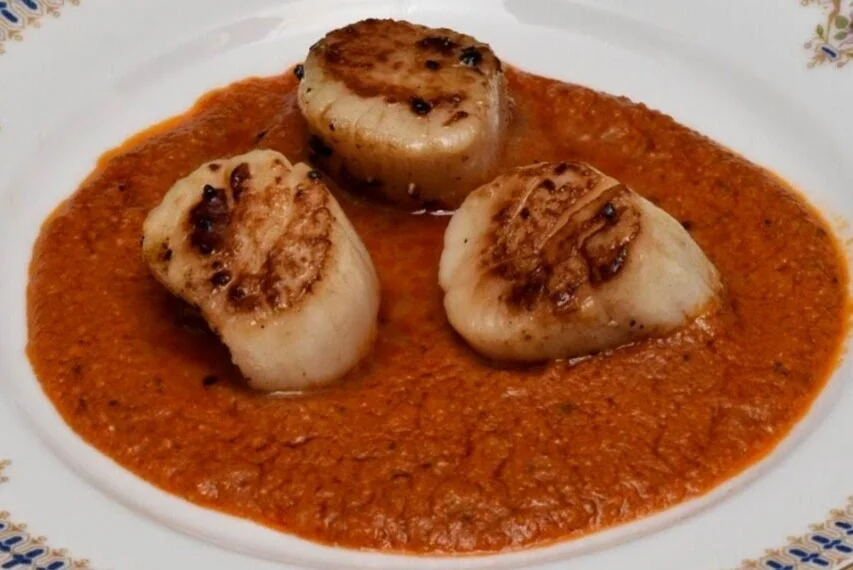Caprese Salad →
Often served as an antipasto, anywhere in the world where Italian food is served you will find the delicious, refreshingly light Caprese Salad. According to popular culinary folklore, the Caprese Salad was invented by a stone mason on the island of Capri in Campania to honor the red, green, and white tri-color Italian flag after the first World War. Red tomatoes, green basil, and white buffalo mozzarella drizzled with local olive oil, flaky salt and freshly ground black pepper; simple and delicious. Another version of where the Caprese originated comes from the folks at La Cucina Italiana, according to them the Caprese salad was first served at the Hotel Quisisana on Capri at a dinner for the Futurists, an avant-gard artistic and social movement that was critical of historical traditions and focused on the dynamism of the modern world for inspiration. In a brilliant piece of public relations, the founder of the Futurist movement, Filippo Tommaso Marinetti, published the Futurist Cookbook which criticized the traditional food culture of Italy, especially pasta! (That got some attention!) Legend has it the chef at the Quisisana created the Caprese Salad as a pasta-less dish to honor the Futurists. Regardless of which story you prefer, the Caprese Salad incorporates four foundational ingredients of traditional Italian food (tomatoes, basil, olive oil, and buffalo mozzarella) into one of the most internationally recognized and enjoyed Italian dishes. Buon Appetito!
CAPRESE SALAD
Serves 4
Ingredients
The basics:
5 ripe and firm fresh tomatoes (or an assortment of different tomatoes)
2 balls of buffalo mozzarella (if you can’t find true buffalo mozzarella, use fresh mozzarella made from cow milk; I used fresh Mozzarella Ciliegini)
fresh basil
extra-virgin olive oil
salt
pepper
Optional:
A few drops of good quality Balsamic vinegar (Colavita Balsamic Vinegar from Modena is highly rated and available in many supermarkets), or balsamic reduction; a few rinsed, chopped capers.
PREPARATION
The most common presentation of the Caprese is simply an arrangement of alternating slices of tomato and sliced mozzarella, sprinkled with flaky salt and freshly ground black pepper, topped with fresh basil, and drizzled with extra-virgin olive oil.
If you want to change up the presentation, be a Futurist and use your imagination. Use different kinds of tomatoes (beef steak, orange cherry tomatoes, heirloom tomatoes, etc.) Instead of slicing the tomatoes crosswise into ¼ – ½ inch slices, cut off the stem-end of the tomato and slice the large beefsteak or heirloom tomatoes lengthwise into narrow wedges; cut cherry tomatoes in half; tear, don’t chop the basil leaves; drizzle with olive oil; add a few drops of dark Balsamic vinegar or balsamic reduction; add a few chopped briny capers. Make it your own family tradition.




